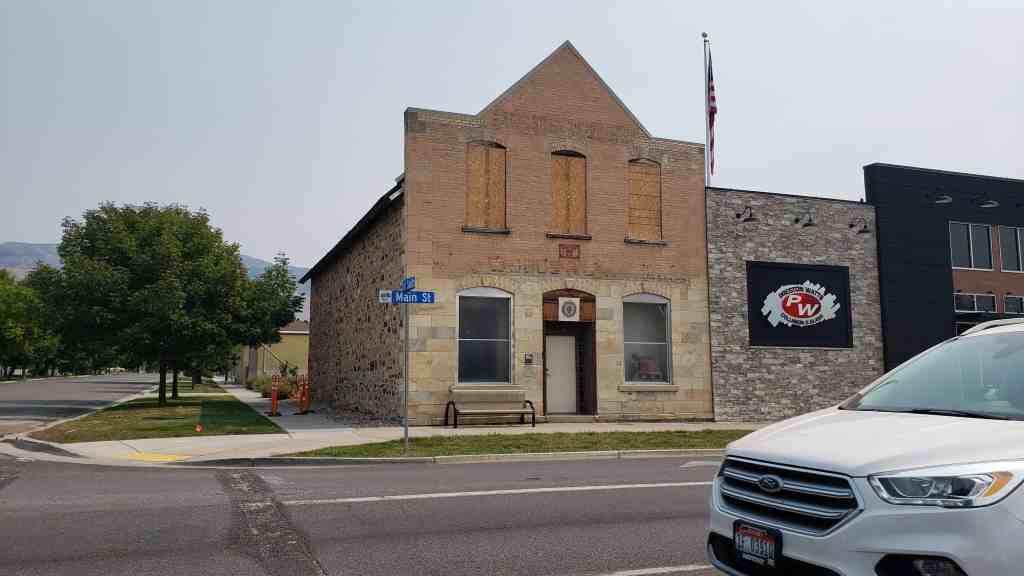Built in 1883, the Douglas General Mercantile Store is locally significant as the oldest remaining commercial building in the town of Smithfield, Cache County, Utah. The town was founded in October 1859 as part of Cache Valley, which was itself settled in 1856 during the first stage of the Mormon colonization of Utah. William Douglas, who operated the store, began business in Smithfield in 1865, obtaining goods from the East and wholesaling them throughout the area. In 1883, when the building was constructed, it was one of only three such establishments in the town, and remains as the only physical structure tied to Smithfield’s early commercial history. The building has been associated with the commercial activity in the town through the firms of Douglas Mercantile, James Cantwell & Son, and the Union Merc Company since 1883. In addition, the building is the second oldest mercantile building identified to date that is located outside Utah’s heavily populated area known as the Wasatch Front, which comprises four of Utah’s twenty-nine counties. The oldest building is the Ephraim United Order Cooperative Building constructed in 1871-71. Also, the building gains added importance in the history of Smithfield because of its unique construction, the only one of its type in the town. Stone was used for the rear and two side walls in a rubble construction technique, while brick was utilized on the upper half of the façade and coursed sandstone for the
lower half. Thus, the building represents the use of four different building materials as wood was also utilized.
Located at 101 South Main Street in Smithfield, Utah and added to the National Historic Register (#82004113) on August 4, 1982.
Related:
The town of Smithfield in Cache Valley, Utah, was tied to the early Mormon colonization of Utah. Part of what has been labeled “the inner cordon of settlements,” Cache Valley was itself settled in 1856, and Smithfield in 1859. As an agricultural region in northern Utah, Cache Valley aided in the supplying of goods not only to northern Utah, but also to mining regions in Idaho and Montana. Smithfield, which began as a settlement of dugouts and wagons, in 1860 became a village with houses arranged in “fort style” (forming a square where the rear portions of the buildings constituted the walls of the fort). It had been named Smithfield in 1859 for John Glover Smith, the first Mormon bishop, who exercised power in both church and civic affairs.
William M. and Cyntheann Merrill Douglas arrived in Smithfield in 1862. Douglas was born in Scotland in 1839, came to Utah in 1854 as a convert to the Mormon church, and settled in Salt Lake City. He established a general store in Salt Lake in partnership with Thomas Richardson. It was with Richardson that Douglas operated a store in 1865 in Smithfield. Goods were hauled from Chicago, Illinois to Ogden, Utah (about 35 miles north of Salt Lake), then to Smithfield by team. There, these goods would be wholesaled to nearby towns such as Richmond and Logan (eventually the Cache County seat). According to one local source, the indication was that Douglas and Richardson served as early distributors of general merchandise for the entire Cache Valley area.
William Douglas and Thomas Richardson were both called to serve missions for the LDS church in 1869, closing the store. In 1871 Douglas reopened his business in a frame structure. By 1883 business was such that the merchant could afford to construct the present wood, stone, brick, and sandstone building. Architecturally, the Douglas General Mercantile represents a unique type of construction in Smithfield, utilizing four different building materials–the only one of its kind in town.
In 1897 Douglas sold the structure and business to James Cantwell, who had settled in Smithfield in 1862. Cantwell served as the town’s postmaster and city councilman for nearly 20 years. The store operated as James Cantwell & Son until 1910, when it was sold to William L. Winn and Lorenzo Toolsen, who established the Union Mercantile corporation. Thus, the building served as a main commercial establishment for the agricultural town of Smithfield, and as it is the only remaining commercial building from the town’s early history, gains local significance and importance. Since 1964 the Smithfield American Legion Post has occupied and used the building. No immediate plans have been
made to rehabilitate or restore the building.





